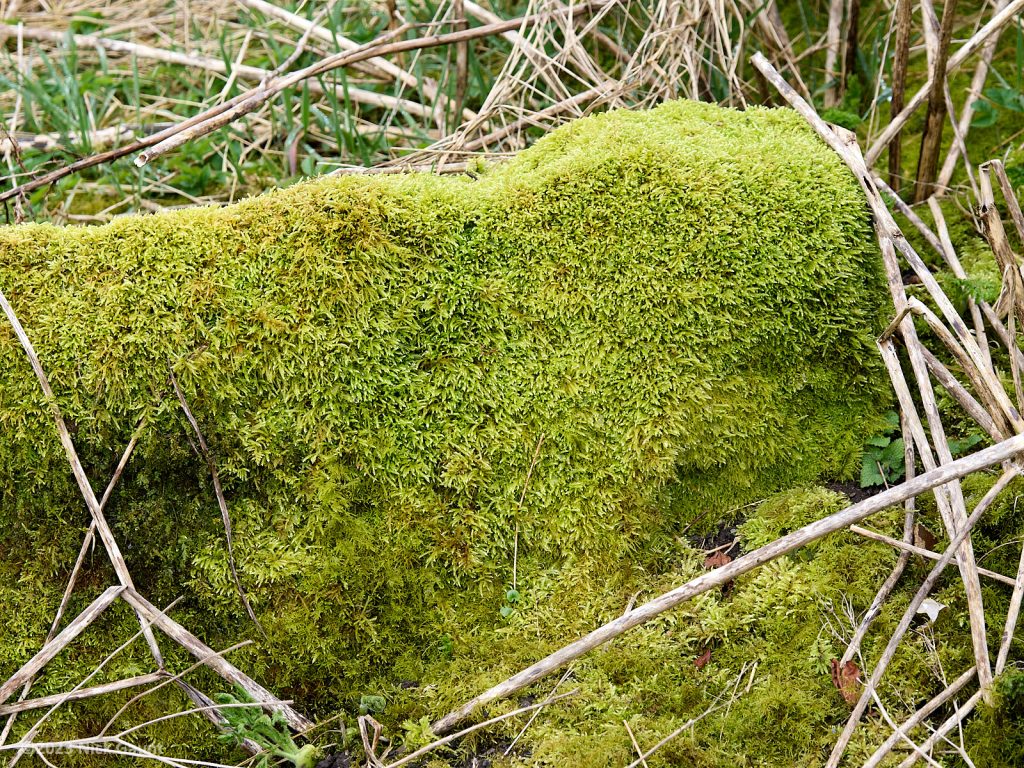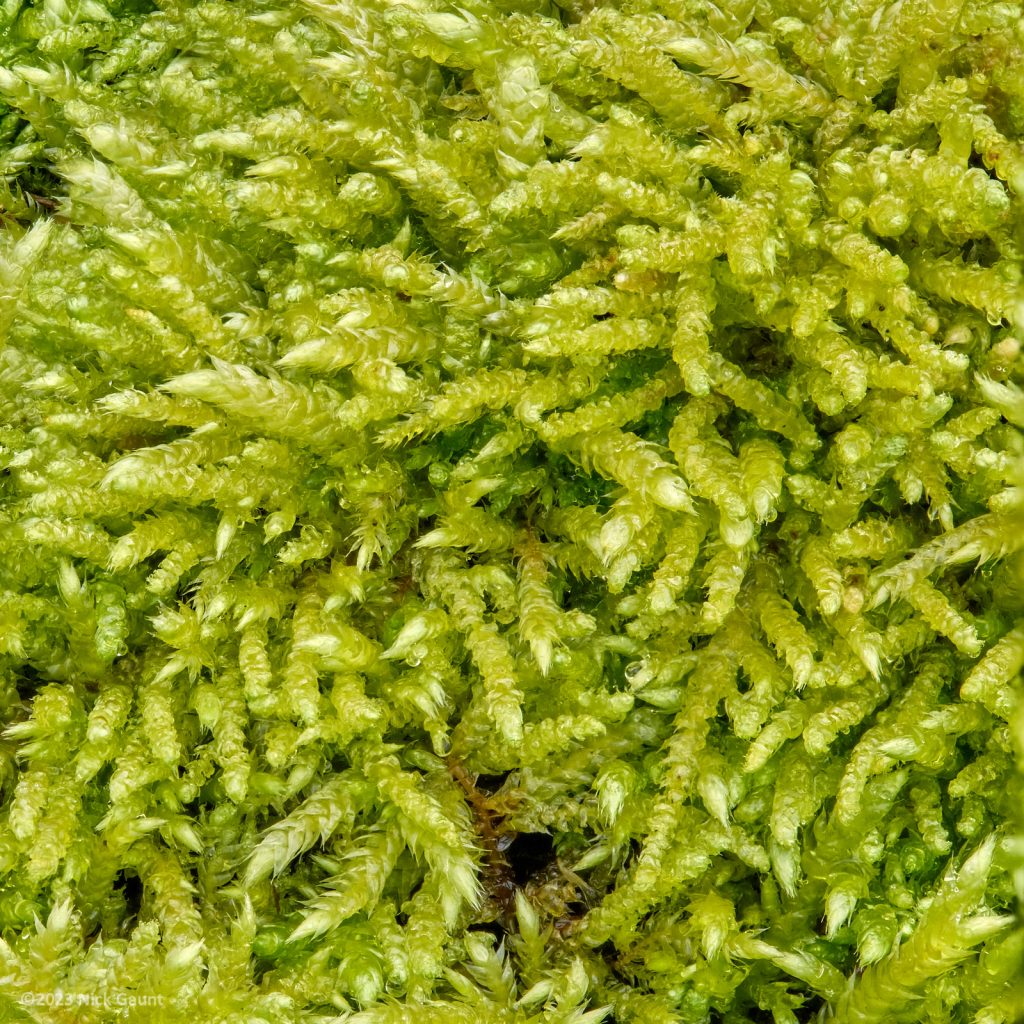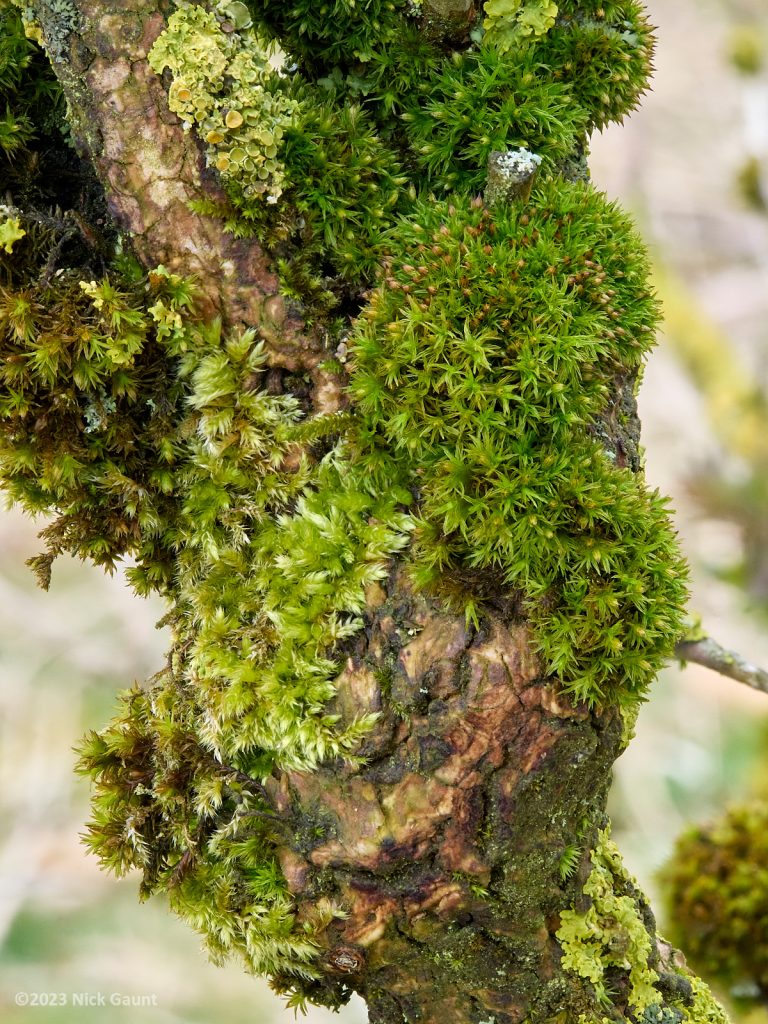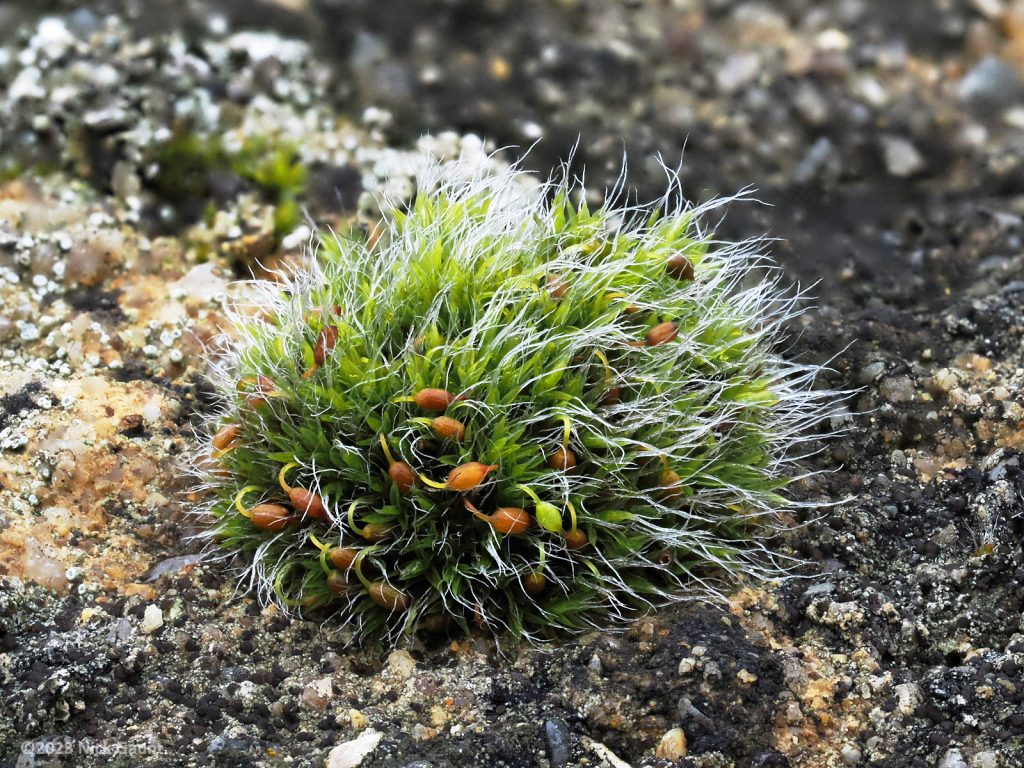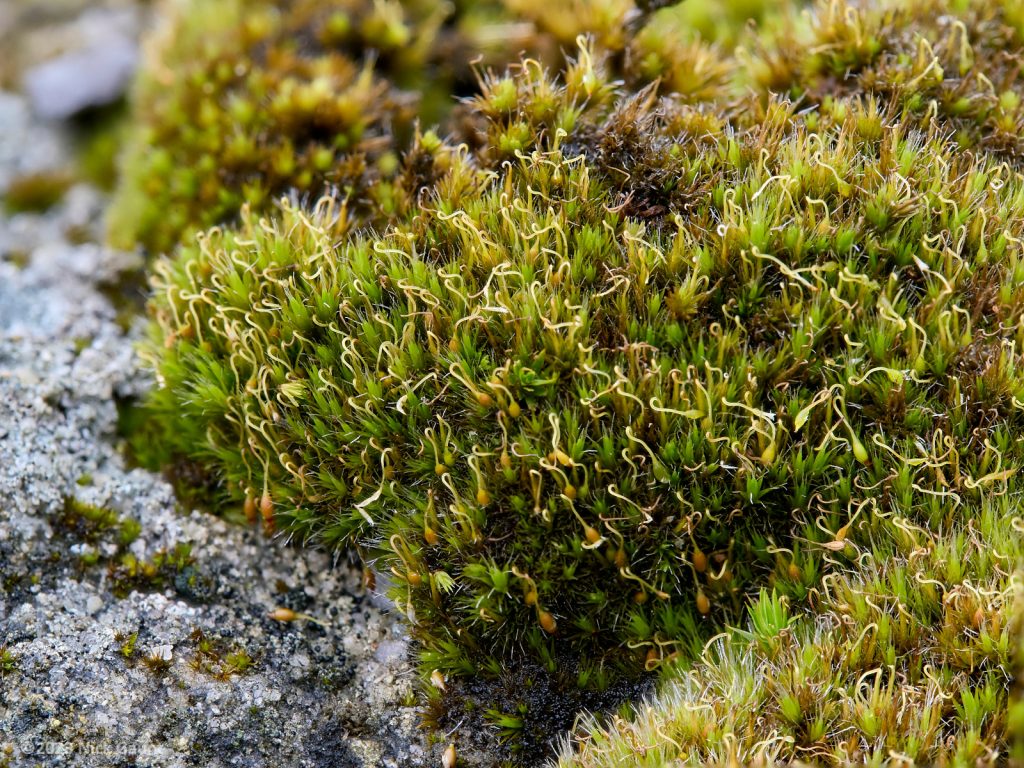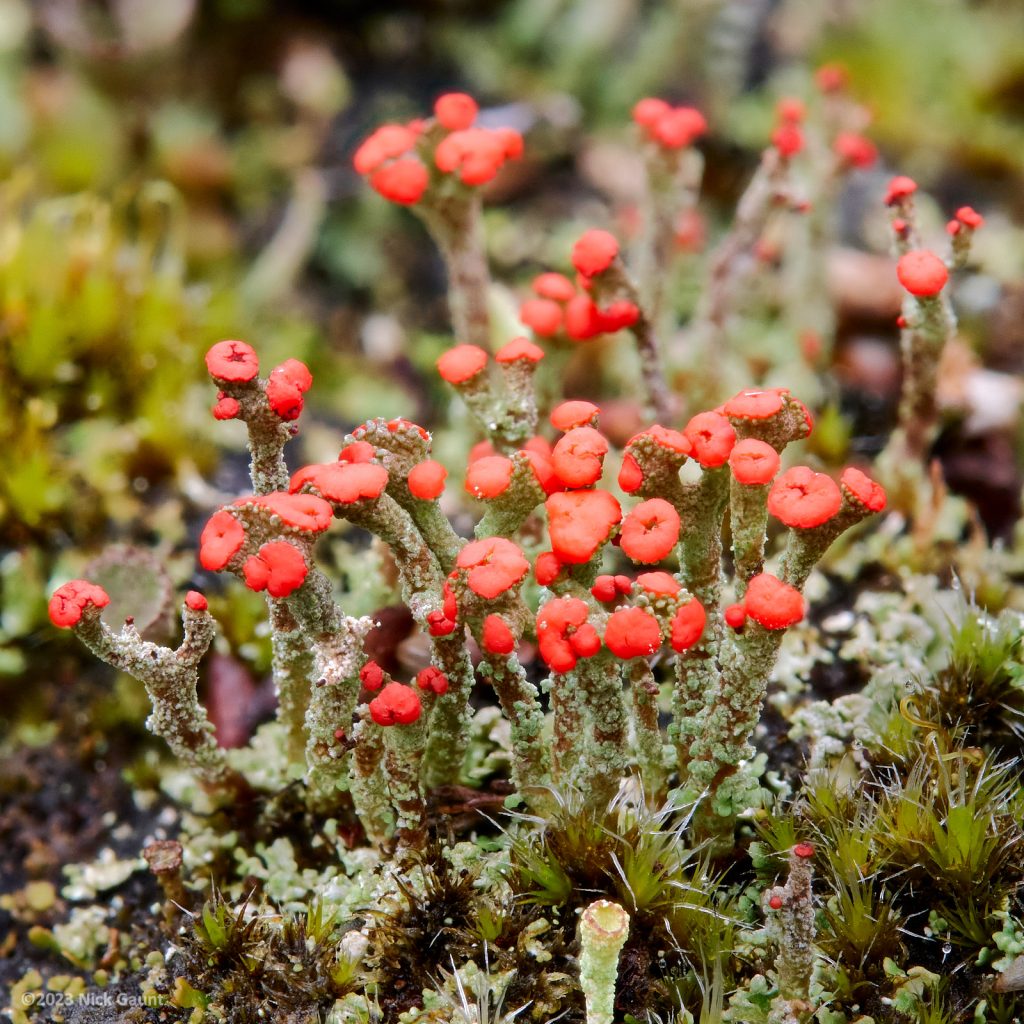Four members met on Heyshaw Moor to the sound of Curlew and Snipe, and the sight of an impressive flock of Golden Plover. However, our purpose was to study the variety of mosses and liverworts on the moor, so we took loupes to our eyes and learnt to distinguish the two main groups of mosses – acrocarps and plerocarps – and see the main characters of some common species. The rough grassland revealed Springy Turf-moss (Rhytidiadelphus squarrosus), Rough-stalked Feather-moss (Brachythecium rutabulum) and Common Feather-moss (Kindbergia praelonga). A boulder was completely covered by Clustered Feather-moss (Rhynchostegium confertum); the drystone wall had Grey-cushioned Grimmia (Grimmia pulvinata), Wall Screw-moss (Tortula muralis) and Cape Thread-moss (Orthodontium lineare); and a small Elder (Sambucus negra) had Wood Bristle-moss (Orthotrichum affine), Lateral Cryphaea (Cryphaea heteromalla), Capillary Thread-moss (Bryum capillare) as well as several lichens and Jelly Ear Fungus.
On the moor itself we found tussocks of Common Haircap (Polytrichum commune), Heath Plait-moss (Hypnum jutlandicum) growing on the heather, Neat Feather-moss (Pseudoscleropodium purum) in the grass, and our only liverwort, the diminutive Common Threadmoss (Cephaloziella divaricata), threading between stems of Heath Starmoss (Campylopus introflexus), an invasive moss only introduced in 1941 but already found throughout the UK. A good showing of terricolous lichens including some Cladonia species caught our eyes as well.
As the weather closed in we decided to leave Guisecliff Wood for another day.
Nick Gaunt

